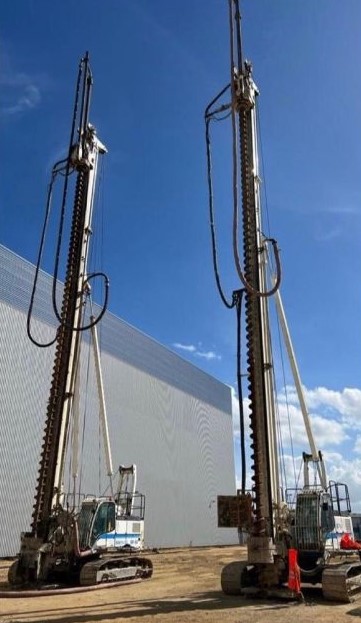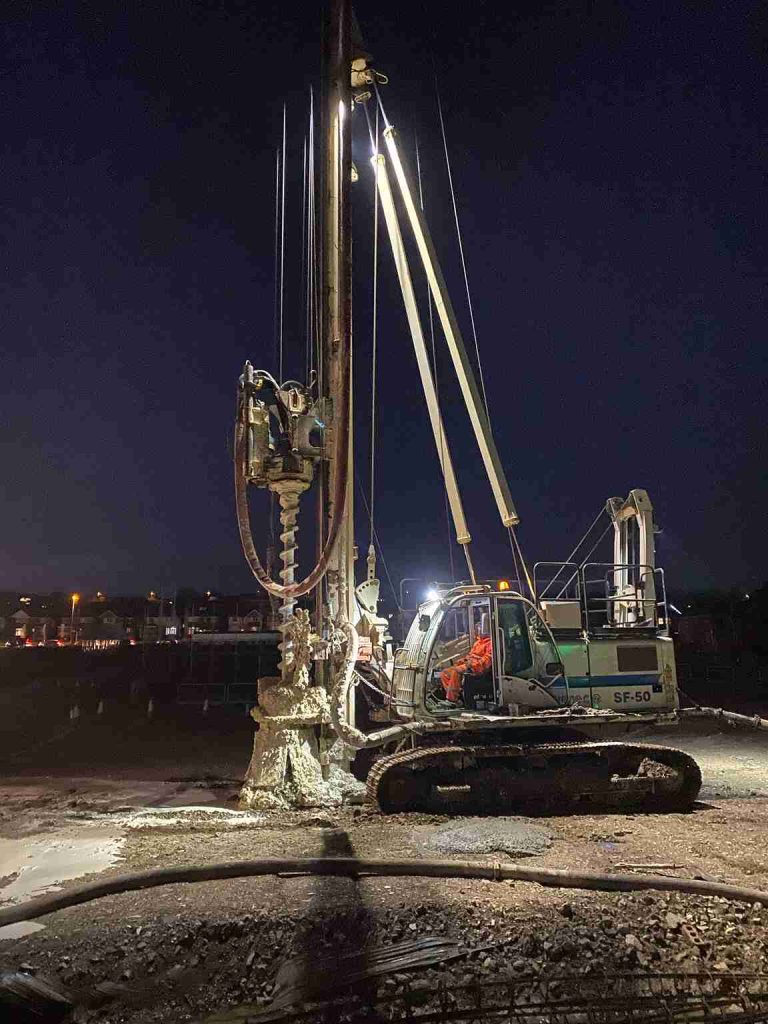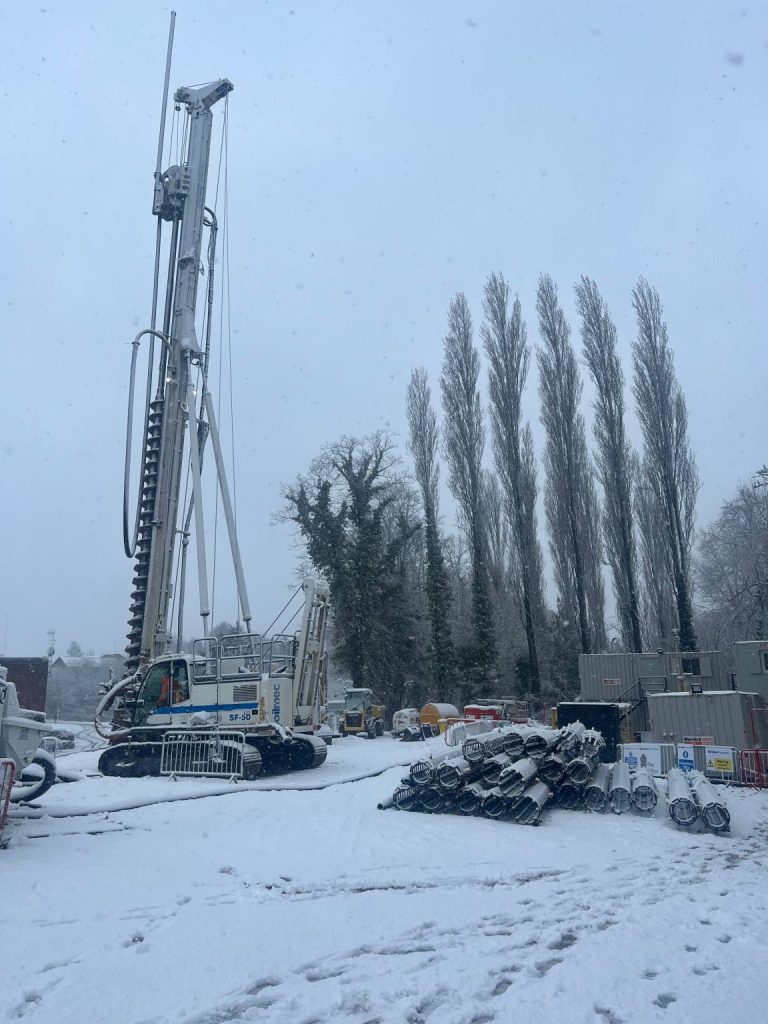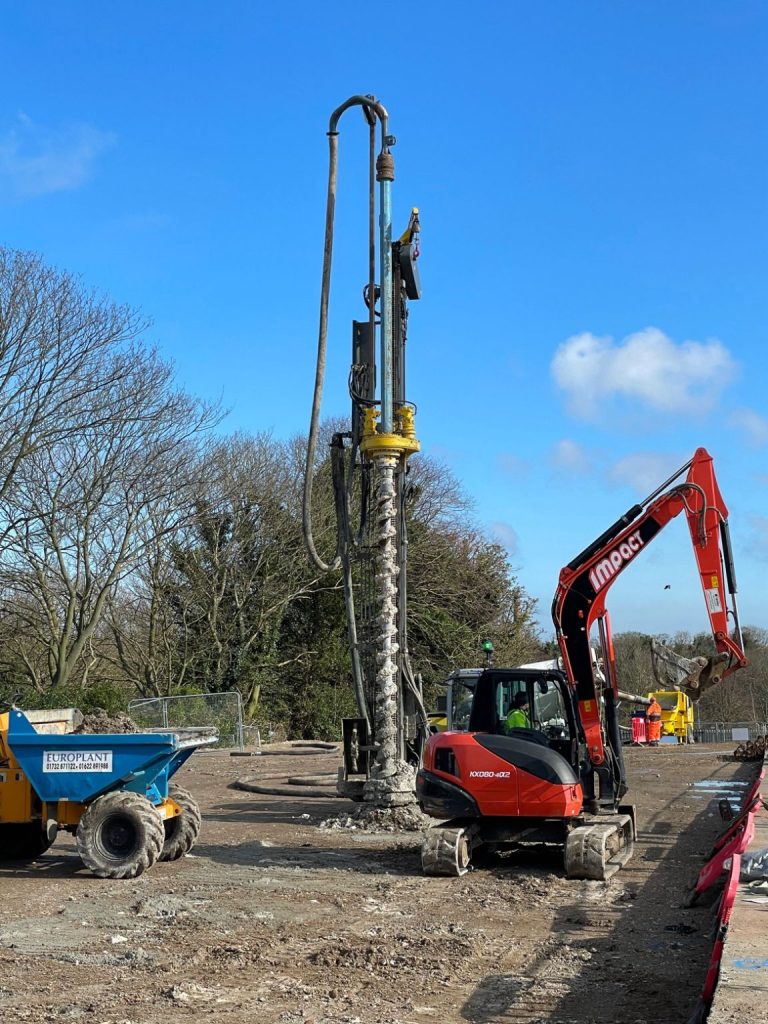What are Controlled Modulus Columns?
What are Controlled Modulus Columns?
Controlled Modulus Columns (CMC) provide an efficient solution for improving the soil in difficult conditions, especially in applications like wind turbine foundations and trash disposal facilities. They are organised to upgrade the distribution of the load between the structure and the soil, guaranteeing a solid foundation.
- Support distribution: CMCs are organised in a grid pattern, distributing heavy loads uniformly.
- Not to be confused: They are often mistaken for other foundation techniques, like drilled caissons or auger-cast piles.
CMC Piles Installing Procedure
The installation process of CMC piles is efficient and quicker compared to traditional piling techniques. It involves several streamlined steps:
Site Examination: Engineers assess the soil conditions thoroughly to ensure the correct design for the CMC pile layout.
Column Drilling and Concrete Filling: A hollow-stem auger is used to drill to the required depth, and concrete or grout is pumped in to create each column as the auger is removed.
Spacing and Load Testing: The CMC piles are installed in a tailored grid layout, with spacing adjusted based on the project’s specific load-bearing needs. Load tests are then conducted to confirm that the installation meets the structural requirements.
Foundation Build: After installation and testing, a foundation slab or pile cap is placed on top of the CMC piles, and normal construction activities can proceed.




Mon–Fri: 8:00am-6:00pm
Skilled Labour
Customer Satisfaction
Advanced Machines
Technical Characteristics of CMC
The technical specifications of CMCs are centred around their deep reach and effective size for load-bearing:
- Depth: CMCs can reach depths of up to 50 meters for soil treatment.
- Diameter: The elements typically range from 280mm to 500mm in diameter, which ensures they are highly effective in load distribution.
How Things Operate at the Construction Site?
The functionality of CMCs can be understood through the following five steps:
Displacement of Soil: The augers move the soil laterally, consolidating it beneath the CMC for better load support.
Densification: This process compacts the soil, increasing its ability to carry heavy loads from the structure above.
Reinforcement: During installation, the ground is compacted and strengthened, improving its properties to create a composite system with the CMCs.
Distribution of Load: Once installed, the load from the structure is transferred to both the CMCs and the soil beneath them. The stiffer the soil, the more load it bears.
Load Transfer Platform (LTP): A layer of broken stone, known as the Load Transfer Platform, is usually added on top of the CMCs to help distribute loads uniformly throughout the platform.
Advantages of Controlled Modulus Columns
The Controlled Modulus Column (CMC) method offers several advantages over traditional piling methods:
- Economically Viable: CMCs are more financially viable than traditional piling, as they use fewer materials and require a smaller workforce.
- Time Efficiency: The installation procedure is quicker, minimising overall construction schedules and speeding up project completion.
- Minimum Ecological Impact: CMCs are eco-friendly, producing minimum land disturbance and conserving the environmental surroundings.
- Adaptability: CMCs are convenient for different building projects and can be used in various types of soil and ecological conditions.
Disadvantages of Controlled Modulus Columns
In spite of the numerous advantages, CMCs accompany specific disadvantages that must be taken into account:
- Limited use: CMCs are perfect for loose, granular, or soft clayey soils but might not work well in highly cohesive soils with high plasticity or places with a high water table.
- Construction constraints: Installing CMCs requires specific tools and a trained workforce, which might not always be easily accessible, especially in urban or remote places where such resources are in short supply.
- Long-term performance: While CMCs elevate the land’s load-bearing capability, they might be impacted by persistent problems like settlement, consolidation, and differential movement if they are not meticulously designed and checked.
- Possibility of failure: CMCs have been unsuccessful in certain circumstances because of improper placement or design faults. Factors leading to failure include ineffective reinforcement, unsuitable material choices, and unfriendly soil conditions.
Applications of CMC Piles
CMC piles are adaptable and used in diverse building projects:
- Industrial and Commercial Buildings: CMCs are perfect for storehouses, factories, and other massive structures that require a dependable base in swampy soils.
- Construction Projects: CMCs allow for the streamlined installation and minimum disturbance of roads, railways, and airports.
- Housing Developments: CMCs provide an economical and effective alternative to traditional piling techniques for domestic projects situated in places with difficult ground conditions.
- Delicate Environmental Spots: CMCs are usually utilised in eco-conscious places like wetlands or historic sites, where minimum environmental disturbance is needed.
Evolving Impact of CMC Piles in Construction
With ongoing technological advancements, CMC piles are becoming more efficient and accessible. Modern design improvements and better installation equipment are expanding their use, especially as construction projects demand greater cost-effectiveness and environmental efficiency. Integrating eco-friendly materials and optimised installation techniques will further enhance the capabilities of CMCs for diverse soil conditions.
Long Story Short!
CMC piles (Controlled Modulus Columns) are transforming foundation solutions for challenging soils, offering an economical, green, and efficient alternative to traditional piling techniques. They help guarantee structural integrity in different applications, including industrial, domestic, and development projects. As the construction sector concentrates on practicability and flexibility, CMCs are progressing towards playing a vital role in future infrastructure development works.
